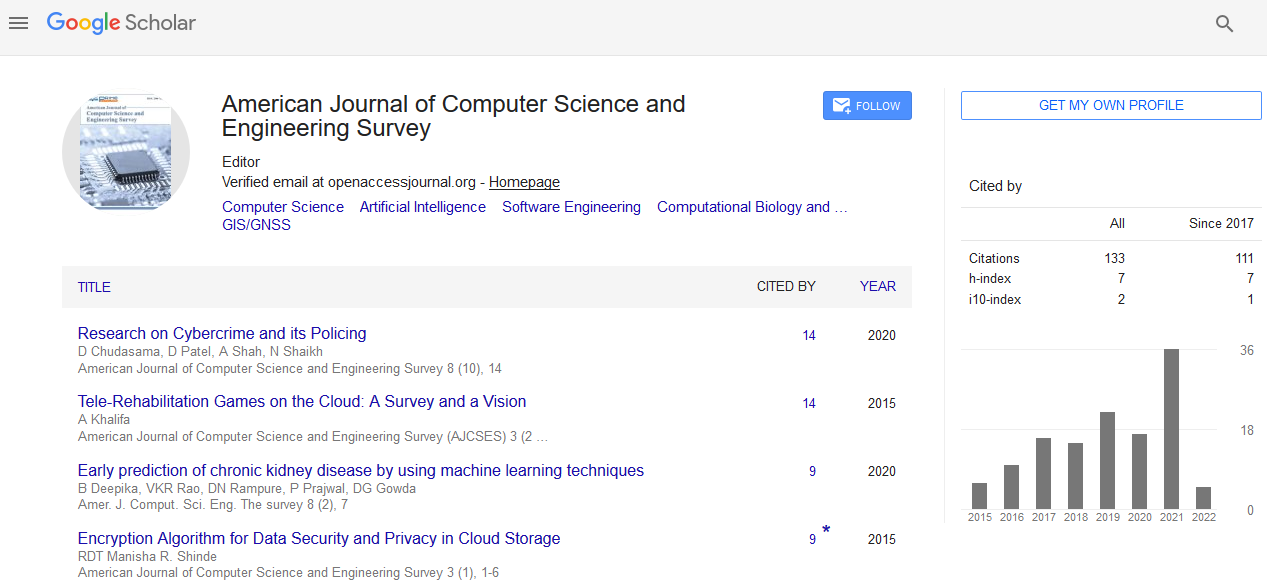Short Communication - (2022) Volume 10, Issue 4
A Small Analysis on Computer-Aided Diagnosis of Pneumoconiosis
Liqin Zhao*
Department of Radiology, Beijing Tiantan Hospital, Capital Medical University, Beijing, People's Republic of China
*Correspondence:
Liqin Zhao,
Department of Radiology, Beijing Tiantan Hospital, Capital Medical University, Beijing,
People's Republic of China,
Tel: 8541279630,
Email:
Received: 29-Jun-2022, Manuscript No. IPJAPT-22-14447;
Editor assigned: 01-Jul-2022, Pre QC No. IPJAPT-22-14447 (PQ);
Reviewed: 15-Jul-2022, QC No. IPJAPT-22-14447;
Revised: 20-Jul-2022, Manuscript No. IPJAPT-22-14447 (R);
Published:
27-Jul-2022, DOI: 10.36846/2349-7238-10.4.20
Introduction
Pneumoconiosis is the most widely recognized and most destructive
word related illness in China. It is portrayed by diffuse
fibrosis of lung tissue brought about by long haul inward breath
of inorganic mineral residue and its maintenance in the lungs
during word related exercises. The complete number of cases
in China has arrived at 1 million and keeps on expanding at a
pace of north of 20,000 new cases every year. Dust breathed in
through the respiratory lot might contain silica atoms and may
cause pneumo-alveolitis, central sores, nodular injuries, dusty
fibrosis, gigantic fibrosis, and other aspiratory pathologies. It
can cause sensational changes. These sores fundamentally
present as little adjusted structures with sporadic opacities, diffuse
interstitial fibrosis in the lungs, and siliceous masses. The
traditional order of pneumoconiosis is fundamentally founded
on the Worldwide Radiographic Characterization Rules for
Pneumoconiosis distributed by the Global Work Association
in 2011. The ongoing norm in China is the “Determination of
Word related Pneumoconiosis” which is a right assessment
of chest radiographs utilizing various little opacities, lung region
dissemination, and pleural plaques to analyze and order
pneumoconiosis. Since the beginning and movement of pneumoconiosis
is a constant interaction, the wealth of little pacifying
sores on chest radiographs is likewise a persistent cycle.
Albeit particular preparation, correlation of standard movies,
and upgrades in imaging gear and methods have worked on
the demonstrative exactness of word related doctors, contrasts
between clinicians stay huge because of the abstract idea of
picture understanding. Past examinations under similar outer
circumstances have proposed that conflicting appraisal in view
of the shape, size, and number of little pacifying sores is the
primary driver of conflicting pneumoconiosis arrangement.
Description
In this way, expanding the objectivity, precision and consistency
of the symptomatic process is vital. PC supported determination (computer aided design) offers an objective technique
for working on the translation of clinical pictures. The quick
advancement of PC innovation and clinical imaging gear as of
late has empowered a viable mix of man-made reasoning and
picture handling to work on the recognition and appraisal of
illness seriousness. By utilizing PC created results as a kind of
perspective, radiologists can make more exact inferences about
illness screening and malignant growth risk evaluation. A few
late investigations have investigated the utilization of computer
aided design procedures to analyze pneumoconiosis. New
methodologies have been produced for picture pre-processing;
include extraction, classifier determination, and streamlining.
Notwithstanding, it catches commented on preparing information
utilized in conventional AI models. The quick improvement
of man-made reasoning has prompted the broad utilization of
profound learning (DL) calculations in clinical picture examination.
These models use multi-facet organizations to work with
programmed learning of implied connections in the information.
The subsequent properties are in many cases more different
and significant, particularly in growth imaging applications.
DL can give semi-directed or solo independent learning of
target pictures for grouping undertakings. It additionally integrates
pictures with similar attributes, impersonating the free
learning and examination abilities of people to decrease the
subjectivity of the separated highlights. As of now, there are no
important reports on assessment of pneumoconiosis imaging
in view of PC supported profound learning analytic methods
[1-4].
Conclusion
Convolutional Brain Organization and Profound Lingering Organizations
(expansions of CNN) are normal DL calculations
utilized for picture order. These models enjoy the benefits of
effortlessness, reasonableness, and generalizability. Elective
models with shifting measures of convolutional layers have
likewise been proposed, including 5 organization profundities,
a sum of 100 convolutional layers, and 1 connection layer. This and other comparative calculations have been generally
applied to picture division, acknowledgment, and acknowledgment
assignments. This study zeroed in on assessing the application
worth of DL-based computer aided design methods
in diagnosing pneumoconiosis. The introduced study has specific
constraints. For instance, the proposed computer aided
design framework in light of profound lingering brain organizations
can accomplish high symptomatic exactness and consistency
for free finding, though pneumoconiosis requires an
exhaustive conclusion. It depends on the chest radiograph, yet
additionally on history, the study of disease transmission and
clinical indications. Integrating such subjective variables into PC
helped navigation is a point that requires further exploration.
Moreover, the quantity of patients remembered for this study
was little and the outcomes were fairly factor. Future work will
expand how much information for additional examination. At
long last, this study is just a primer examination of whether computer aided design can analyze pneumoconiosis. Later on,
examination ought to be finished on various phases of pneumoconiosis.
REFERENCES
- Farzaneh MR, Jamshidiha F, Kowsarian S (2010) Inhalational lung disease. Int J Occup Environ Med 1(1): 11-20.
[Crossref][Google Scholar]
- Xie M, Liu X, Cao X, Guo M, Li X (2020)Trends in prevalence and incidence of chronic respiratory diseases from 1990 to 2017. Respir Res 21(1): 49.
[Crossref][Google Scholar]
- Furuya S, Chimed-Ochir O, Takahashi K, David A, Takala J (2018) Global Asbestos Disaster. Int J Environ Res Public Health 15(5): 1-11.
[Crossref][Google Scholar]
- Cullinan P, Reid P (2013) Pneumoconiosis. Prim Care Respir J 22(2): 249-52.
[Crossref][Google Scholar]
Citation: Zhao L (2022) A Small Analysis on Computer-Aided Diagnosis of Pneumoconiosis. J Aquat Pollut Toxicol. 10:20.
Copyright: © 2022 Zhao L. This is an open-access article distributed under the terms of the Creative Commons Attribution License,
which permits unrestricted use, distribution, and reproduction in any medium, provided the original author and source
are credited.

